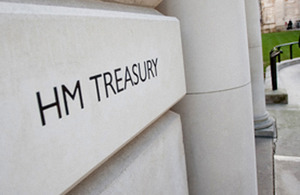Funds for urgent overhaul of Buckingham Palace granted
Buckingham Palace will undergo a 10 year overhaul to protect one of Britain’s most prestigious buildings and one of the country’s most popular attractions.

The government has today (18 November 2016) given the go-ahead for essential works that include replacing electrical wiring, water pipes and the heating system, which were installed in the aftermath of the Second World War.
More than half a million people visit during its summer opening and millions of tourists flock to its gates every year to see the Changing of the Guard. This is estimated to deliver a multi-billion-pound boost to the economy.
In addition, the Palace hosts more than 90,000 people every year, for a range of official events from small receptions to state visits and garden parties. In the last year alone this has included Team GB’s Olympic and Paralympic champions, Sir David Attenborough and Oscar-nominee Salma Hayek.
The project seeks to prevent a serious risk of fire, flood and damage to both the building and the priceless Royal Collection of art belonging to the nation. Windsor Castle suffered a fire in 1992, which raged for 9 hours and caused devastation to large parts of the building. The restoration took more than 5 years, and it is estimated that similar damage to Buckingham Palace could cost up to £250 million for a single wing.
The overhaul will also help to significantly improve visitor access, especially to schools, to help open up the Palace and its treasures even further to the public.
These works will be funded through a temporary increase in the Sovereign Grant from 15% to 25% of the Crown Estate’s profits for the duration of the 10 year works, the Royal Trustees said in a report published today. Parliament will hold the Royal Household to account throughout the process to ensure maximum value for taxpayers’ money.
Built in the 17th Century, Buckingham Palace is a working building where the Queen carries out most of her official ceremonial, diplomatic and representational duties as Head of State and the Commonwealth.
Ministers are clear: significant national events, such as the Changing of the Guard, Trooping of the Colour and Garden Parties must continue throughout this period and the Palace should remain open to visitors.
The phased programme will be sequenced wing-by-wing to enable the Palace to remain occupied and fully operational, and allow the Queen to carry on with her official duties for the country.
The Chief Secretary to the Treasury, David Gauke, said:
Tourists are drawn to this country because of our culture, heritage and royal legacy, and when they visit they spend billions of pounds and support thousands of jobs.
We must ensure that the special architectural and historic nature of some of our greatest buildings are protected for future generations, therefore it is only right we ensure Buckingham Palace is fit for purpose.
These urgent works have been properly costed and will ensure the Palace can continue its centuries-long tradition of being the working house of our Monarch. We will ensure every penny spent achieves the greatest value for money.
Sir Alan Reid, Keeper of the Privy Purse, said:
I am grateful to my fellow Trustees for conducting this first joint review of the new Sovereign Grant arrangements. I welcome the government’s commitment, through the Sovereign Grant, to provide additional resources for the reservicing of Buckingham Palace.
The Occupied Royal Palaces are a vital part of our shared national heritage, and this investment will help preserve a landmark building for future generations. We firmly believe that our chosen option for delivering the programme offers the best value for money and reduces the risk of a more costly, catastrophic building failure in the years to come.
Next steps
The Sovereign Grant is calculated as a percentage of the Crown Estate’s profits, which are paid to the Treasury every year. In 2015-16, £304.1 million was paid to the Treasury.
As the Royal Trustees have concluded the percentage of Crown Estates revenue should be changed, the Sovereign Grant Act 2011 requires HM Treasury to lay an order to amend this. This will be done in time for the works to start in April 2017.
The increase in resources is only required temporarily, for the duration of the works themselves, therefore it is the intention of the government to bring forward legislation to reset the level of the Sovereign Grant to appropriate levels (15% of the Crown Estate revenues) once they have been completed (expected to be in 2026-27).
The Royal Trustees report clearly sets out the increased grant is for the repair works, and the Government will have a representative on the programme board as part of the scrutiny arrangements. In addition, the NAO audit them and the PAC will also hold them to account.
Updates to this page
-
Updated to include the Palace's report link
-
First published.